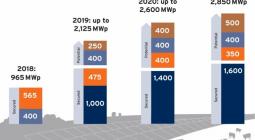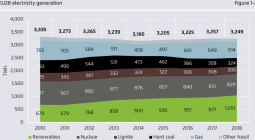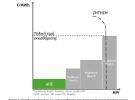Solar to be world’s largest power source by 2050 as cost halves

Analysis by DNV GL shows that utility-scale PV will dominate the sector due to 'powerful economies of scale'
Solar energy will account for almost half of all power capacity installed globally by 2050 as the cost of the technology halves, according to new analysis by DNV GL.
The amount of solar power generated each year will be 65 times higher than in 2016, providing 40% of the world’s electricity and making PV the planet’s largest source of power.
“The sheer magnitude of the coming PV revolution is hard to comprehend,” says the analysis.
In contrast to other observers, the Norway-based global risk-management company believes that two-thirds of the solar capacity will be utility-scale.
“The powerful economies of scale in PV are likely to see costs in 2050 at half of today’s levels — enabling additional investments in grid expansion and integration technologies such as storage, connectivity, and demand-response that increase the value of solar assets,” says the analysis, written by global solar segment leader Dana Olson and deputy director of its Energy Transition Programme, Bent Erik Bakken.
“Although other commentators emphasize the role of distributed generation over large centralized installations, we do not share that view. We foresee utility-scale PV dominating electricity generation because of its favourable economies of scale, outweighing the savings in transmission costs brought by decentralized microgrid installations.”
Utility-scale PV will dominate all world regions by 2050, with the exception of sub-Saharan Africa, where off-grid PV will lead the way, says the report.
By 2050, the cost of PV systems will have shrunk by 43-54% compared to today, depending on the region and the type of PV installation. Installed utility-scale PV systems will halve in price by 2050 to $0.42-0.58 per watt.
In addition, 60% of global PV capacity in 2050 will be based in two countries — China and India.
The authors say they “foresee no significant spatial or resource-related limitations to this spectacular [global] growth”, but add: “However, an important challenge to consider is the ability of the solar industry to attract the substantial financial capital required to support this acceleration and growth across diverse markets and categories around the globe.
“There may be a limit to the speed and volume at which financial capital will be available to support this acceleration of development and deployment.”
06 March 2019






